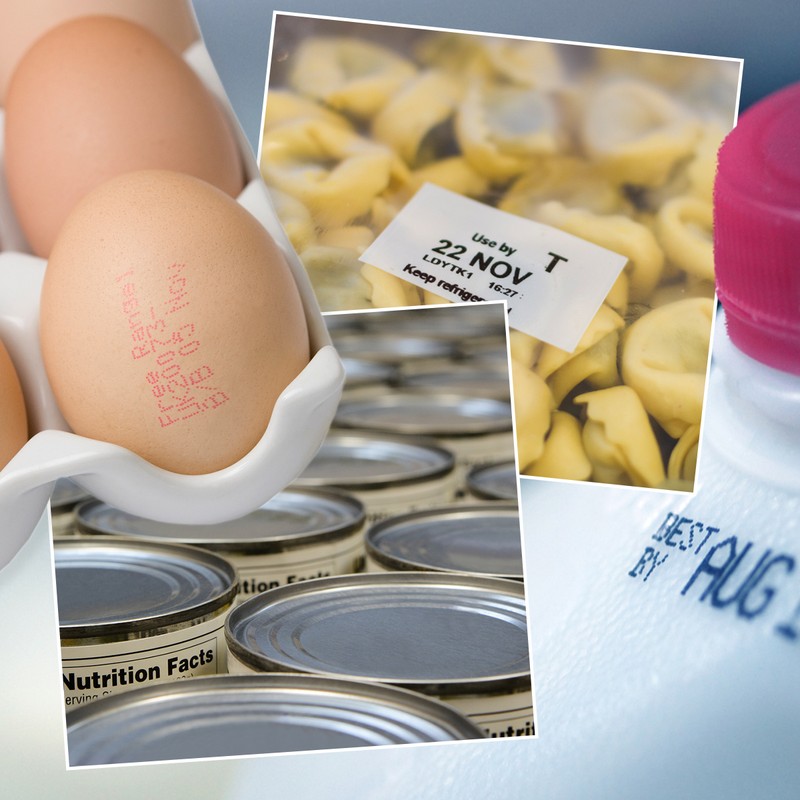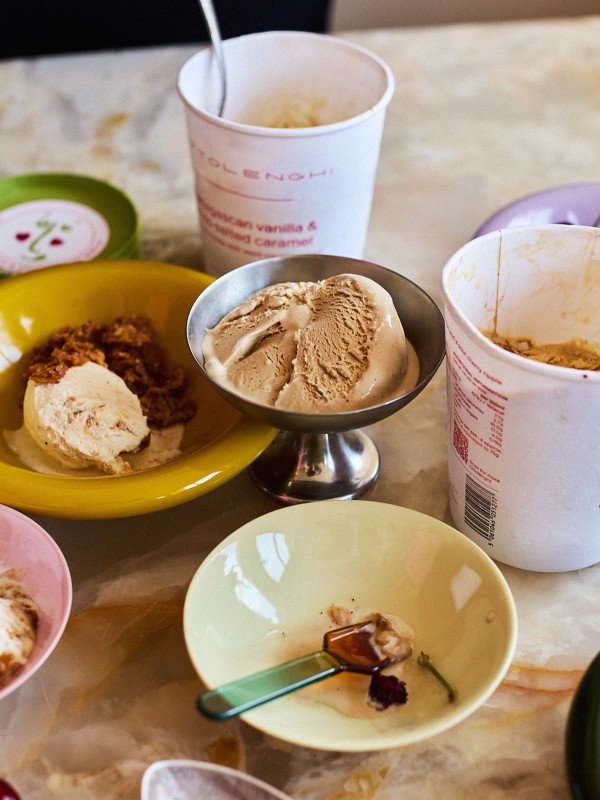Foods That Are Safe To Eat Past Their Sell By Date
UPDATED JANUARY 2020
In the fridge…
Eggs
Several experts, including the Food Standards Agency (FSA), agree that as long as eggs are stored in a cool environment – usually under 5°C – to prevent the growth of salmonella, they’re typically safe to eat several weeks beyond their ‘best before’ or ‘sell by’ date. A good test if you want to be extra careful involves placing an intact egg into a bowl of cold water. If it sinks, it’s fine to eat, but if it floats, it might need chucking. Sometimes it’s hard to know if an egg has really gone off before you crack it, but statistics show that a third of UK households throw away entire cartons without checking first.
Milk
According to standard food guidelines, once opened, all milk should last between four and seven days past its printed ‘sell-by’ date, if properly refrigerated. However, this could differ depending on the type of milk you buy. For example, if unopened, whole milk typically lasts five to seven days, while skimmed milk usually lasts at least seven. As for plant-based milks or lactose-free varieties, these can last up to ten days past the printed date, although proper refrigeration is still key.
Yoghurt
Yoghurt is another dairy product which tends to get ditched long before it’s actually gone bad. There are some obvious warning signs to look out for, such as green mould or a ‘fizzy’ taste. Both are indications it might be time to throw the tub away, but as long as yogurt stays sealed with a plastic lid (you could always decant into Tupperware if the original packaging won’t do) it can last as long as a fortnight beyond its ‘best before’ date.
Cheese
Unlike other dairy products, the first signs of mould on hard cheeses such as parmesan or cheddar aren’t reason enough to throw the whole lot in the bin. Simply cut or scrape the mould off the affected area and the rest is still good to use – sometimes for as long as six weeks beyond the purchase date. Soft cheeses are less resilient, with standard food advice warning not to eat things like cream cheese, brie or camembert a week beyond the ‘sell by’ date.
Ready-To-Eat Salad
A packet of mixed leaves is an easy stand-by in fridges all over the country – especially when it comes to whipping up an easy mid-week side dish. But they’re often not cheap, swhich is why it's irritating to see them start to wilt so quickly. Expert advice says it’s usually okay to eat these up to a week beyond the ‘sell by’ date, just make sure it doesn’t have a strange smell or excess water collecting in the bag.
In the store cupboard…
Chocolate
Chocolate can be safe to eat long after it’s been opened or printed ‘best before’ dates. If unopened and stored properly, dark chocolate lasts up to two years from the day it was made, although that time gets cut in half once the wrapper comes off. As for milk and white chocolate, cut those times in half again. Think one year if unopened, and six to eight months if opened and stored properly. As chocolate ages it can grow white spots called ‘bloom’ – which is where the sugar has naturally crystallised – but it’s still perfectly safe to eat.
Preserves
Savoury preserved foods which have gone through the process of salting, curing and drying – like pickles, sauerkraut and kimchi – tend to last much longer than more sugary counterparts. The shelf life of jam or marmalade, for instance, hugely depends on the storage method and the amount of sugar in the product. If you’re unsure, a good rule of thumb is that they’re safe to eat six months to a year beyond the ‘best before’ date, as long as there aren’t obvious signs of white or green mould. It’s worth noting that lemon or other fruit curds typically have the shortest shelf life of all because they are made with eggs and butter.
Biscuits & Crisps
It’s always worth checking if biscuits are completely dehydrated and still inside the original package. If they are, and don’t show any signs of dampness or mould, then they are still safe to eat – usually long beyond the expiration date, around six weeks or so. The same goes for crisps, which contain high levels of salt which helps preserve their shelf life. If an already-open packet starts to feel a bit soft, try popping them in a low-heat oven for a few minutes to restore the crunch.
Pasta
Generally speaking, dry pasta can be kept and eaten for up to two years after purchase – maybe even three if it’s stored correctly in a cool and dry cupboard. The same does not apply to fresh pasta, as this typically contains water, which gives it a far shorter expiration date. Equally, stuffed ravioli might include any number of ingredients which spoil easily, so be extra careful of eating anything containing meat, fish or dairy beyond the ‘best before’ date.
Bread
A packet of ready-sliced bread might be okay to eat for up to a week beyond its ‘use by’ date – just keep a close watch for any signs of visible mould which tell you it’s time to toss it. Bread that goes a bit hard or stale is usually fine to eat: popping it in the toaster is a sure-fire way to make it a little more palatable. It’s controversial, but keeping fresh bread in the fridge instead of on the kitchen counter could extend the shelf life by another two weeks. Storing sliced bread in the freezer means you’ve always got toast as an option for breakfast – just be sure to adjust your toaster settings when the time comes.
In the freezer…
Meat
If it hasn’t been cooked to begin with, frozen meat – think anything from raw steaks to chicken breasts – can typically last up to a year in the freezer. Once cooked, it’s best not to keep it in the freezer beyond three months. If you forget to freeze it on the date of purchase, the FSA recommends against eating it beyond its ‘use by’ date. As per its advice, you shouldn’t consume any expired meat, unless it was frozen when purchased and subsequently defrosted.
Fish
Research shows that the more often you freeze fish before using, the better, as extremely low temperatures can help kill off any hidden parasites. A good rule of thumb is not to freeze raw or uncooked fish beyond six months, while fattier varieties like salmon and or trout tend not to hold up well beyond three. Once cooked, it’s best not to store it beyond one month, and make sure it’s stored in a shallow dish to allow it to freeze quickly.
Vegetables
Frozen vegetables can usually be kept for between eight months and a year – just be sure to keep them at a constant temperature and not continuously refreeze them. With proper storage, veg can often last beyond the date provided on the packet, although nutrition experts warn that quality may well deteriorate beyond this point. It’s worth noting that frozen veggies are just as nutritious as fresh ones, with ice-cold temperatures often locking in all the necessary vitamins and minerals.
Mixed Leftovers
Finally, a word on leftover meals. Rather than singular items or ingredients, it isn’t good practice to keep leftover portions longer than three or four days in the fridge or three months in the freezer. And while freezing leftovers can help extend their shelf life and minimise waste, it often depends on what ingredients were used in the first place. For instance, if there’s a high dairy content it might not be wise to keep it longer than a month, while vegetable-based recipes could be kept in there for nearer three.
DISCLAIMER: We endeavour to always credit the correct original source of every image we use. If you think a credit may be incorrect, please contact us at info@sheerluxe.com.






